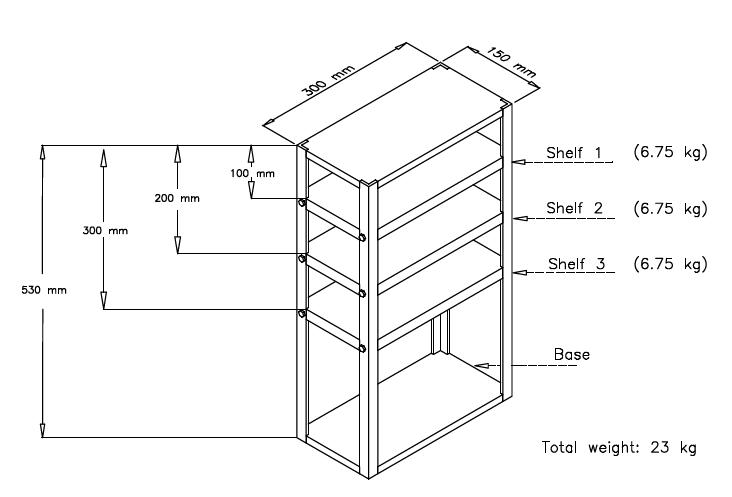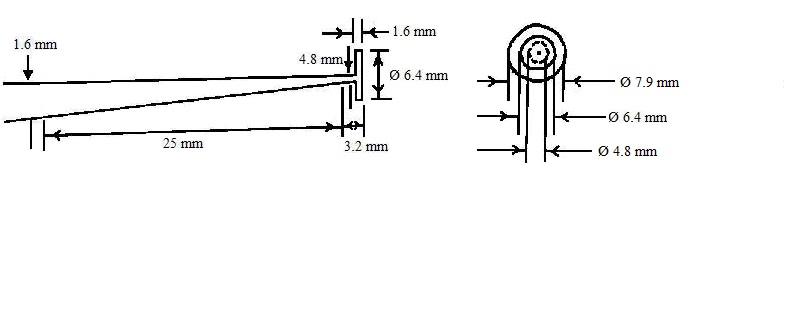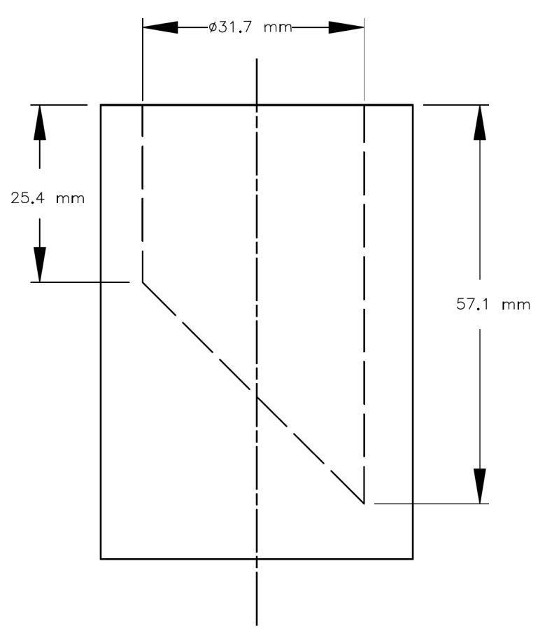Playpens Regulations
SOR/2016-189
CANADA CONSUMER PRODUCT SAFETY ACT
Registration 2016-06-22
Playpens Regulations
P.C. 2016-616 2016-06-21
His Excellency the Governor General in Council, on the recommendation of the Minister of Health, pursuant to section 37 of the Canada Consumer Product Safety ActFootnote a, makes the annexed Playpens Regulations.
Return to footnote aS.C. 2010, c. 21
Specifications
Marginal note:Toxic substance
1 Any playpen that contains a toxic substance must comply with section 25 of the Toys Regulations in relation to that substance.
Marginal note:Flammability
2 Any part of a playpen that is made of textile or other pliable material must have a flame spread time greater than seven seconds when tested in accordance with the Canadian General Standards Board standard CAN/CGSB-4.2 No. 27.5, entitled Textile Test Methods: Flame Resistance — 45° Angle Test — One-Second Flame Impingement, as amended from time to time.
Marginal note:Stitching
3 A playpen must be stitched using lock stitching.
Marginal note:Height of sides
4 The minimum height of a playpen side, measured from the top of the floor of the playpen to the top of the upper framing of the playpen, must be 480 mm.
Marginal note:Stability
5 All support points of a playpen must remain in contact with the inclined plane of the plywood when tested in accordance with Schedule 1.
Marginal note:Mesh — strength and integrity
6 (1) Any mesh made of textile or other pliable material that forms part of the sides, top or bottom of a playpen must not, when tested in accordance with Schedule 2, tear or become detached from its supporting structure or anything to which it is attached.
Marginal note:Mesh — size of openings
(2) The openings in any mesh made of textile or other pliable material that forms part of the sides, top or bottom of a playpen must be of such a size that the tip of the probe described in Schedule 3 is unable to pass through the openings when tested in accordance with that Schedule.
Marginal note:Scissoring, shearing or pinching
7 A playpen must be free from any part that may cause injury to the occupant due to scissoring, shearing or pinching.
Marginal note:Parts — wood or plastic
8 (1) Every exposed part of a playpen that is made of wood or plastic must be free from cracks, burrs and other defects and be smoothly finished to eliminate rough or sharp edges and corners.
Marginal note:Parts — metal
(2) Every part of a playpen that is made of metal must be free from burrs and smoothly finished to eliminate sharp edges, corners and points.
Marginal note:Metal tubing
(3) Every cut edge of any metal tubing of a playpen that is accessible to the occupant must be protected by a cap that remains in place when subjected to a force of 90 N applied in any direction.
Marginal note:Bolts
(4) The threaded end of every bolt of a playpen must, if the end is accessible to the occupant, be covered by an acorn nut or a device that offers equivalent protection.
Marginal note:Small parts
9 Every part of a playpen that is accessible to the occupant and is small enough to be totally enclosed in the small parts cylinder illustrated in Schedule 4 must be affixed to the playpen so that on the application in any direction of a force of 90 N to the part, it does not detach from the playpen.
Marginal note:Openings
10 Every open hole in a wooden, plastic or metal part, or a part of similar material, of a playpen must, if the hole is accessible to the occupant, be less than 3 mm or more than 10 mm in diameter.
Marginal note:Cord or strap — maximum length
11 Any cord, strap or similar item having a free, stretched length in excess of 180 mm must not be attached to a playpen.
Marginal note:Floor strength
12 The floor of a playpen must be capable of supporting a load of 22 kg uniformly distributed over an area of 4.5 × 104 mm2 for a period of one minute without visually perceptible damage to the playpen.
Marginal note:Wheels or casters
13 A playpen must not be equipped with more than two wheels or casters or provisions for attaching them.
Marginal note:Folding playpen
14 A playpen that folds must contain a locking device or other design feature that prevents it from folding or collapsing when tested in accordance with Schedule 1.
Information
Marginal note:Presentation
15 The information required by these Regulations, excluding the assembly instructions referred to in subsection 16(3), must be
(a) in English and French;
(b) indelibly printed on or permanently affixed to the playpen or its packaging;
(c) clearly and prominently displayed; and
(d) in characters not less than 2.4 mm in height.
Marginal note:Information — general
16 (1) Every playpen and the packaging in which it is sold must carry the following information:
(a) the name and principal place of business of the manufacturer or the person for whom the playpen is manufactured;
(b) the model name or model number of the playpen; and
(c) the month and year of manufacture of the playpen.
Marginal note:Statement
(2) The following statement must appear immediately following the information required by subsection (1):
This product complies with the requirements of the Playpens Regulations (Canada)
Ce produit est conforme aux exigences du Règlement sur les parcs pour enfant (Canada)
Marginal note:Assembly instructions
(3) Every playpen must, unless sold fully assembled, carry or be accompanied by instructions, in English and French, that clearly state and show how the playpen is to be assembled.
Repeal
17 [Repeal]
Coming into Force
Marginal note:Registration
18 These Regulations come into force on the day on which they are registered.
SCHEDULE 1(Sections 5 and 14)Test for Stability
1 The following method is to be used for testing the stability of a playpen:
(a) assemble the playpen in accordance with the manufacturer’s instructions;
(b) place the playpen on a sheet of 19 mm plywood of such a size that all support points are at least 50 mm from any edge of the plywood and orient the playpen so that one set of support points in the same plane is parallel to the edge of the plywood, blocking the support points at the downslope edges, as necessary, to prevent slippage;
(c) place the test device described in the figure to this Schedule on the floor of the playpen with the 300 mm edge parallel to the side of the playpen and as close as possible to the side of the playpen that is parallel to the edge of the plywood;
(d) tilt the plywood on the parallel edge until the plywood forms an angle of 10° with the horizontal; and
(e) repeat the steps set out in paragraphs (b) to (d) so that the stability of the playpen is evaluated for each set of support points in the same vertical plane.
Figure — Stability Test Device

SCHEDULE 2(Subsection 6(1))Test for Strength of Mesh and Integrity of Attachment
1 The following method is to be used for testing the strength of the mesh and the integrity of its attachment to the playpen:
(a) assemble the playpen in accordance with the manufacturer’s instructions;
(b) place the playpen on its side so that it lies in a horizontal plane, and use any blocking or support necessary to maintain that position so long as the blocking or support does not act directly on the frame of the side being tested;
(c) apply a load of 9.18 kg that has a rectangular base measuring 150 mm × 75 mm to the geometric centre of the mesh panel or, if any exterior framing interferes with the test, as close as possible to the geometric centre so that the 150 mm dimension of the load is aligned parallel to the top rail of the side that is being tested, in the following manner:
(i) gradually apply the load over a period of one second,
(ii) leave the load in place for 10 seconds,
(iii) gradually remove the load over a period of one second, and
(iv) allow a recovery time of 10 seconds;
(d) repeat the steps set out in paragraph (c) nine times for a total of 10 applications;
(e) repeat the steps set out in paragraphs (c) and (d) on the top portion of the mesh panel in the following manner:
(i) align the load so that the 75 mm dimension is parallel with the top edge of the mesh panel, and
(ii) apply the load to the mesh panel so that the centre of that dimension is between 25 mm and 50 mm below the centre of the top edge; and
(f) repeat the steps set out in paragraphs (c) and (d) on the bottom portion of the mesh panel in the following manner:
(i) align the load so that the 75 mm dimension is parallel with the bottom edge of the mesh panel, and
(ii) apply the load to the mesh panel so that the centre of that dimension is between 25 mm and 50 mm above the centre of the bottom edge.
SCHEDULE 3(Subsection 6(2))Test for Mesh Opening Size
1 The following method is to be used for testing the size of mesh openings on a playpen:
(a) cut a sample of mesh with dimensions of 305 mm × 305 mm;
(b) apply a uniformly distributed force of 0.15 N/mm to two opposite edges of the sample so as to induce a state of uniaxial tension;
(c) attempt to insert the tip of the probe illustrated in the figure to this Schedule through openings in the mesh, without cutting the fibres, using a maximum force of 22 N at 10 randomly located areas in the sample; and
(d) remove the force referred to in paragraph (b) and repeat the step in that paragraph by applying the force to the other two opposite edges of the sample and then repeat the step in paragraph (c).
Figure — A Probe Designed to Evaluate Mesh Opening Sizes

SCHEDULE 4(Section 9)Small Parts Cylinder

- Date modified: